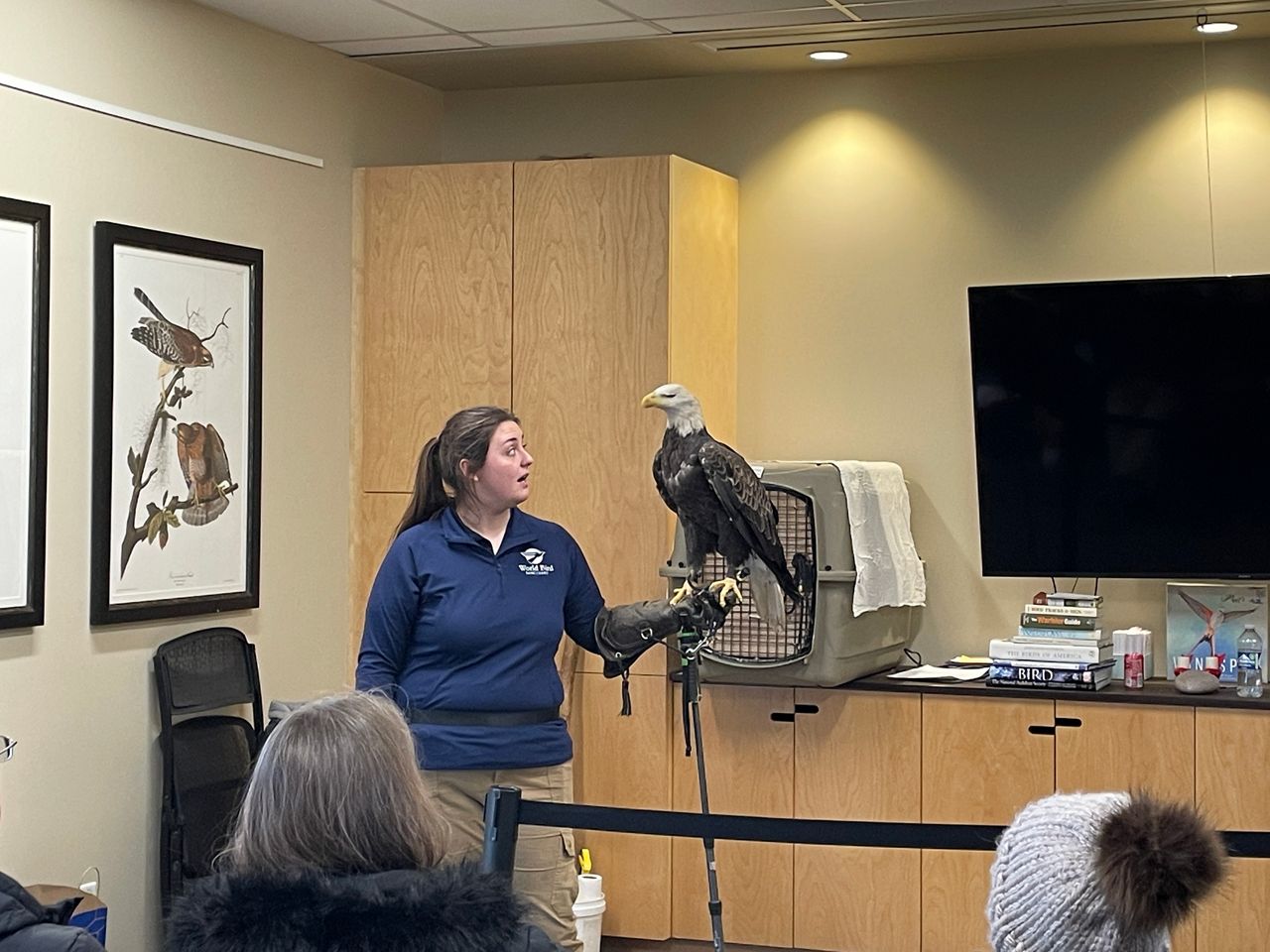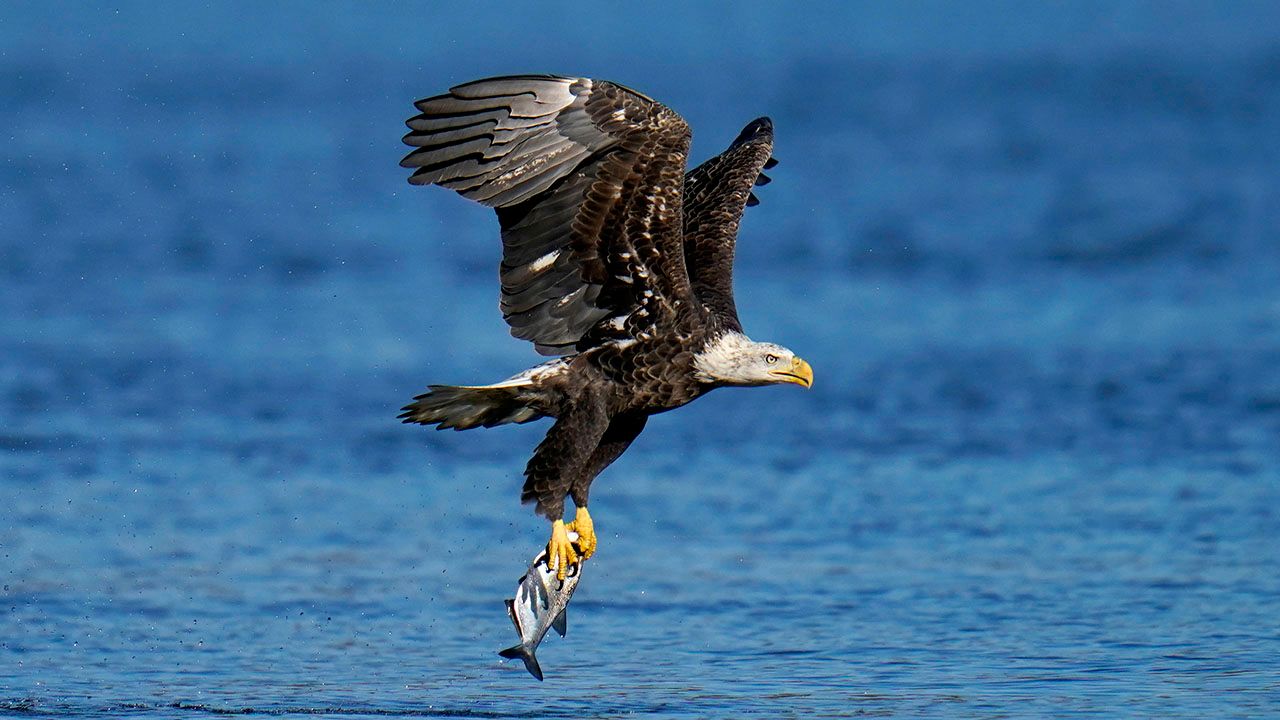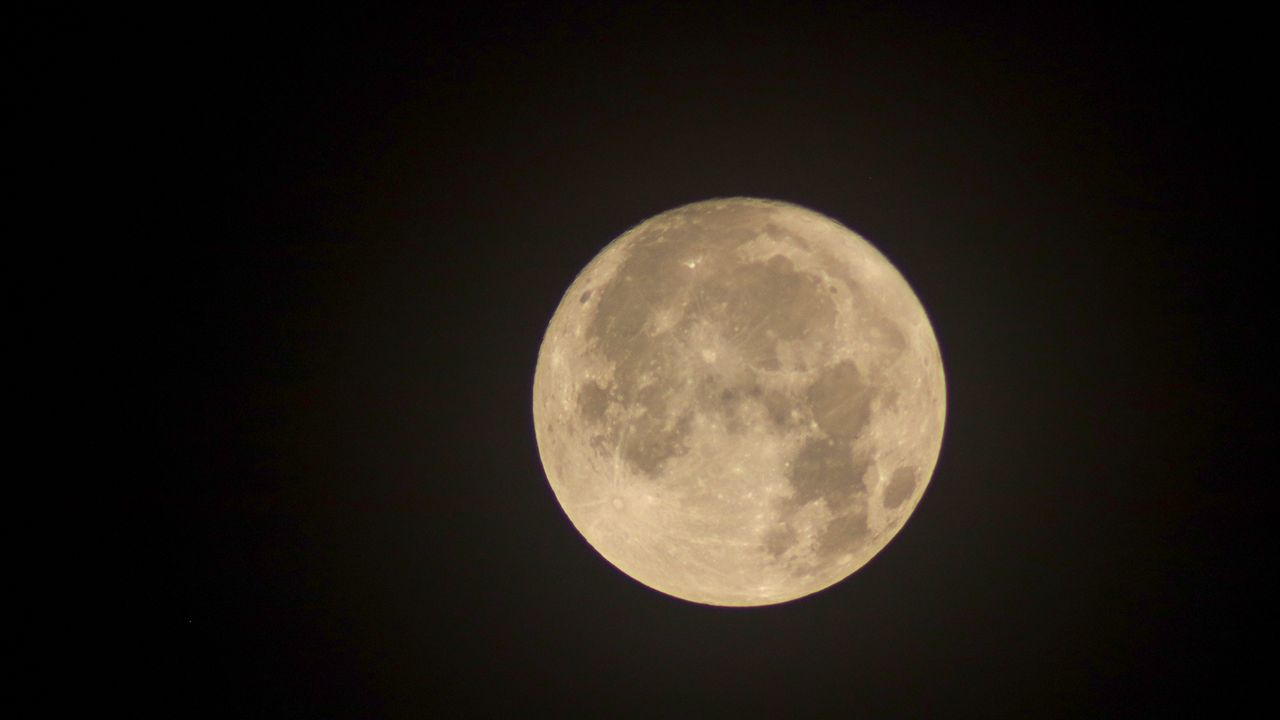Once a rare sighting, the bald eagle is now a frequent flyer across the skies of the St. Louis area. Thanks to restoration efforts over the past four decades, the species is no longer considered endangered.
Missouri remains a leading state in bald eagle populations. Since 1981, the Missouri Department of Conservation (MDC), in collaboration with The Nature Conservancy and the Missouri Department of National Resources, has kept track of bald eagle nests.
While some eagles live in the area year-round, populations see an uptick during the winter as the creatures migrate south to follow the food. Several organizations, including the MDC, Army Corp of Engineers and county parks, offer special programming, named "Eagle Days," during the winter months to educate the public about wintering birds, including eagles.
Ken Buchholz, the director of the Audubon Center at Riverlands in West Alton, Mo. was on hand to answer questions at the recent "Ice-fest" event held at the center.
He tells me our region sees a variety of wintering birds. "Our popular ones are bald eagles and trumpeter swans. There are others, including a diversity of waterfowl and raptors."
At this event, spotting scopes were set up so folks could see eagles in their nests in the trees and even observe a group of trumpeter swans enjoying a swim. There was a "meet and greet" with an actual bald eagle, where the audience asked questions about the bird in front of them.

December through February are the best times to view the eagles because that’s when the rivers and lakes are frozen up north, and the birds will migrate south to our region. Until recently, it was a wonder if we would see the annual influx of eagles because of the mild weather.
"Eagles feed on fish and go where the fish are. If the rivers, lakes and ponds aren’t frozen up north and as long they are open and there’s not a lot of snow on the ground, birds, especially eagles, can access the food that they need, and they’ll just stay put."
Quite the contrast from last year, when a cold snap in late December froze not only areas to the north, but our region as well.

Buchholz says that early season cold brought eagles south earlier, but warmer weather arrived in February, which sent the eagles back north. He says the fluctuations in the weather can spur several migrations back and forth.
"They’re just responding to access to what they need. The birds need food, shelter, safe passage and eventually, nesting grounds."
"Overwintering eagle populations really surge." He says, "There could be anywhere from 60 to 100 eagles in the sanctuary alone."
These numbers are great to see. "The eagles are a conservation success story." And while they are no longer considered endangered, he stresses, "they are still protected, but we are not as concerned about their populations as we are maybe about others."
The best viewing of the eagles would be near a body of water since they feed on fish, but Buchholz says to train yourself to look up in the sky. You may see some eagles, as well as other birds flying in the sky over your neighborhood.
More events will be held through February. Here's a list.
Our team of meteorologists dives deep into the science of weather and breaks down timely weather data and information. To view more weather and climate stories, check out our weather blogs section.









)